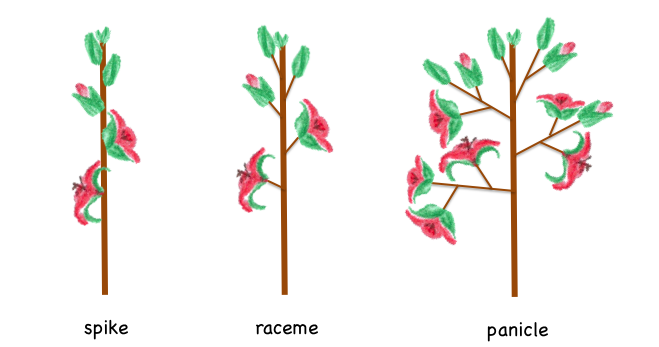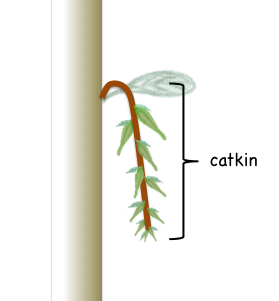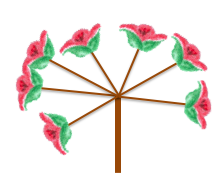Inflorescences that grow apically
Some inflorescences grow apically and indeterminately, like a regular branch does. Young flowers continue to be produced at the tips of the main axis and any branches of the inflorescence, leaving behind the older flowers. There are several of these types of inflorescences: spikes, racemes, panicles, catkins, umbels, heads, and others. These are described below.
Spikes, racemes, panicles, and catkins
Elongate, indeterminate inflorescences include spikes, racemes, panicles and catkins.
- A spike is an unbranched inflorescence in which flowers are sessile on the main axis.
- A raceme is like a spike, but each flower has a pedicel.
- A panicle is more highly branched, with at least two orders of branching in the inflorescences.


A catkin is like a spike or a raceme with very short pedicels, but...
- A catkin is usually pendant, and
- A catkin contains unisexual flowers of the same sex (pistillate or staminate).
The flowers in a catkin generally have reduced perianths (or none) and are wind-pollinated,
Umbels
Umbels are extremely short inflorescences in which the branches of the inflorescence all appear to originate from the same point. The term comes from the same root that gave us the term "umbrella", refering to the spoke-like arrangement of the inflorescence branches.

Compound umbels are more highly branched, and are "umbels of umbels"

Heads
Heads of flowers have flowers that are attached to a common receptacle.

Note the younger flowers toward the center. If this were a more elongate inflorescence, like a spike, that center point would be the tip of the flowering stem.